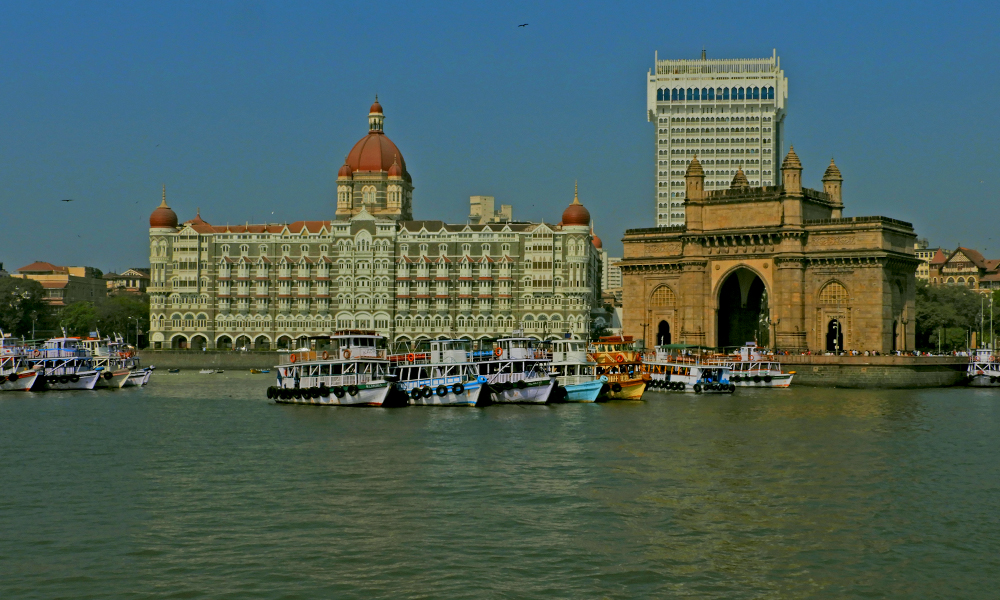
Mumbai is the nerve center for commercial activities in India, hence it is referred as the financial capital of India. Apart from being commercial hub Mumbai is also home to “Bollywood” one of the largest celluloid industries in the world. Attracted by the glamour of Bollywood and the prospects of excelling high in life, a large number of people from within the country and across the globe migrates to Mumbai every year making the city one of the largest cities in the world.
Deriving its name from a stone elephant rediscovered these caves hewn out of solid rocks dates back to 600 AD, this beautiful green island is about one hour’s boat ride from Gateway of India. The cave complex is a collection of shrines, courtyards, inner cells, grand halls and porticos arranged in wonderful symmetry has intricately chiseled rock-cut temples with exquisite sculptures of Gods and Goddesses. Most outstanding of these is the Maheshmurthy or Trimurthy, a 5m (18 ft) high, three headed rock hewn at the entrance of the cave which represents ‘Trinity’ Bramhan the Creator, Vishnu the Preserver and Shiva the Destroyer.
Prince of Wales Museum or Chhatrapati Shivaji Maharaj Vastu Sangrahalaya as we know now is one of finest museum we have in the country. Dedicated to Prince of Wales’s (who later became King George V) Mumbai (then Bombay) visit in 1905, building was open as Museum for public in 1922. Conceptualized at the Cresent Site by George Wittet know for designing Indo-Sarcenic style of architecture, museum today houses impressive collection of art and artefacts e.g. sculptures, terracotta and bronze figures, artefacts excavated at Indus Valley Civilization sites, paintings etc. Museum also a section on Natural History and Numismatic.
A very unique feature of Mumbai, at Dhobi Ghat one can witness hundreds of ‘Dhobis’ or traditional laundrymen (who collect dirty linen from your doorsteps, wash them and press them neatly and return them at your doorstep for a pittance) washing clothes on a long V-shaped platform. In fact Dhobi Ghat covers an area of 2.5 acers.
The most prominent monument, Gateway of India is one of the important landmarks of Mumbai. Actually built to commemorate the arrival of King George V to India (who only got to see a cardboard model) on 1911, this arch facing Arabian sea is an imposing Indo-Saracenic architecture.
An attractive two storied building that now houses a reference library with over 2000 books, a photo exhibition of the Mahatma's life, and well-preserved memorabilia, including an old charkha or spinning wheel that Gandhiji used, Mani Bhawan has been Mahatma Gandhi’s residence in Mumbai.
This is one of the favorite hangouts of Mumbaikars in their leisure time. People of all age and walks of life loves to spend their leisure time here in the evening because of its colorful ambiance. Chowpatty turns into a carnival venue in the evening.
This windswept driveway flanked by the concrete jungle of Nariman Point on one side and the Arabian Sea on the other is an important artery for the heavy suburban traffic heading downtown. Sandwiched between Nariman Point and the green slopes of Malabar Hills it is referred to as Queen’s Necklace because of its street lights which appeared as a string of glittering jewels in the evening.
Perched at the top of Malabar Hill, these terraced gardens proudly stand since the 18th century over Mumbai’s main reservoir. It is believed that the garden was built to cover the reservoir from contamination with the activities of the nearby Tower of Silence.
To watch the Tiffin Walla’s at work is an interesting experience while in Mumbai. Here, home-cooked lunches are delivered to workers via a remarkable system unique to this city, the freshly cooked meal in its own ‘Tiffin’ container passing through the hands of a dozen or so carriers before arriving on its owner’s office desk ready for the midday meal.
Site by Naulak Web Design.